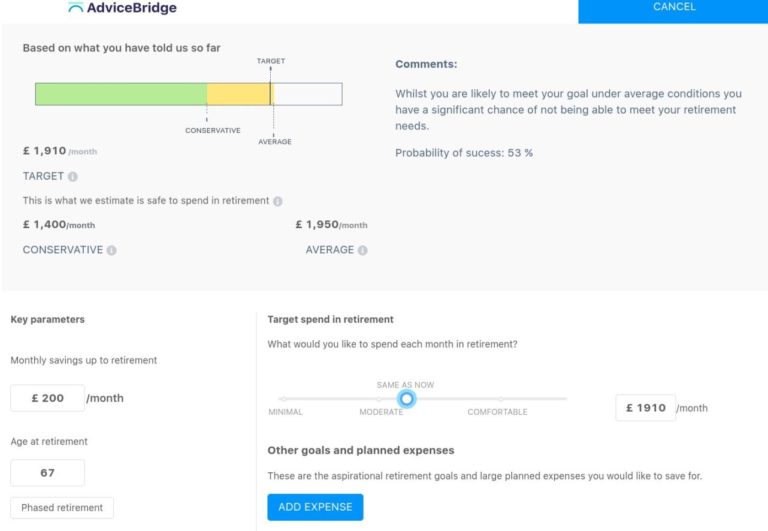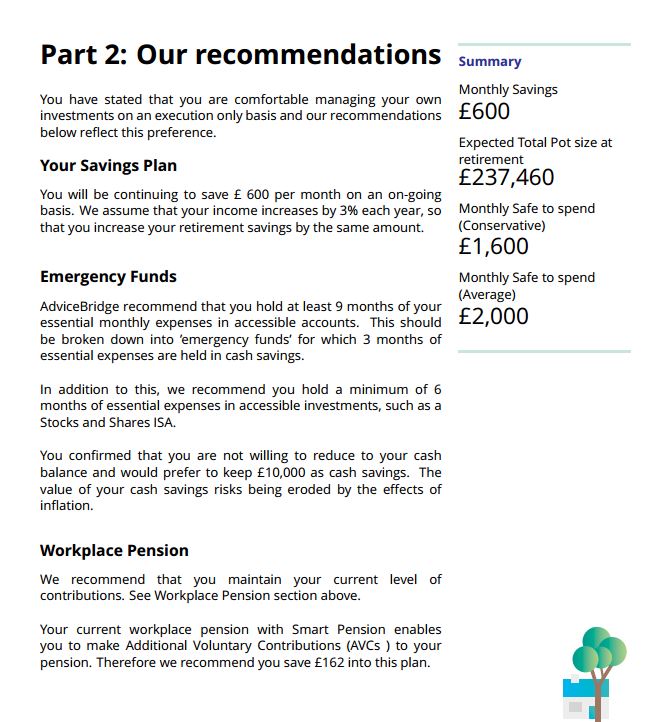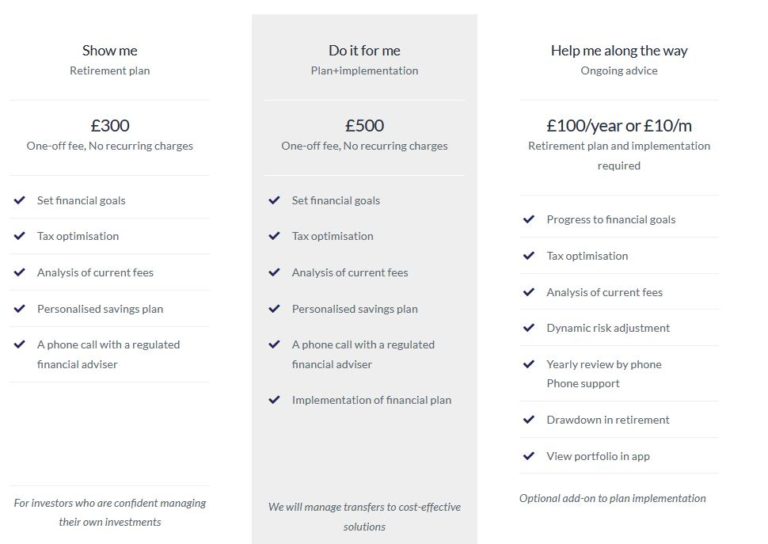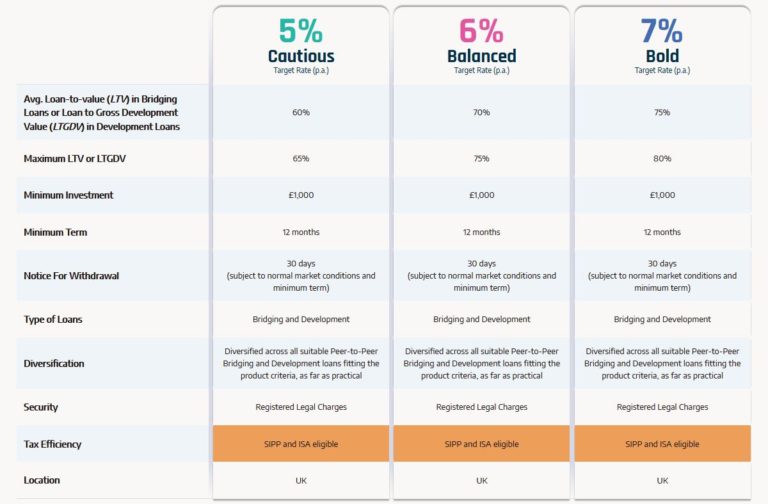Ratesetter: My Review of This P2P Lending Platform
Updated 11th June 2020
Around two years ago I invested some money in the Ratesetter P2P lending platform, partly – I admit – to take advantage of their welcome offer (the current welcome offer is discussed below). So today I thought I would share my thoughts about it.
Ratesetter is a P2P platform that puts would-be lenders and borrowers together, obviously taking fees for doing so. It is one of the longest-running P2P lending platforms, having launched in 2010. They are one of the ‘Big Three’ P2P lending platforms, which also include Zopa and Funding Circle.
In this post I am looking at Ratesetter from a lender’s (or investor’s) point of view, but of course anyone can apply to borrow via Ratesetter too.
Types of Investment
Although investors lend money to borrowers via RateSetter, the actual lending is done behind the scenes. So from an investor’s point of view, RateSetter looks and works much like a bank or building society. Importantly, though, investors with RateSetter don’t benefit from the protection bank and building society savers receive by law in the UK via the Financial Services Compensation Scheme. More about this shortly.
There are three main investment products available on RateSetter. They are named Access, Plus and Max.
The Access product, as the name indicates, aims to offer quick access to your funds without any fee. The Plus and Max products pay more interest but you have to pay a ‘release fee’ of 30 or 90 days’ interest respectively if you wish to withdraw from them.
The terms and conditions for each account are summed up in the screen capture below.
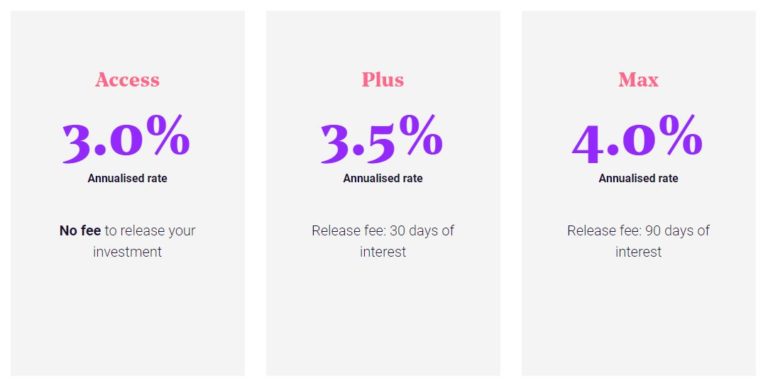
Note that the interest rates on Ratesetter can vary, and the rates on offer when you read this may be different from those shown above.
The Access product is the closest equivalent to an ordinary savings account. You can ask to withdraw some or all of your money at any time without penalty. It’s important, however, to note that this is NOT the same as an instant saver account with a bank or building society. Withdrawing does depend on there being other investors willing to take over your lending on the platform. Ratesetter say that to date investors have received their withdrawn investments within 24 hours on average, which does offer some reassurance.
- There is also a ‘fair usage’ clause, which prevents investors from lending new money for 14 days after a withdrawal.
With the Plus and Max products you can also request withdrawals at any time. As stated above, however, in these cases a release fee is applied.
Provision Fund
As with all P2P lending, your money does not enjoy the same level of protection as bank and building society accounts, which are covered (up to £85,000) by the Financial Services Compensation Scheme.
Ratesetter does, however, have a provision fund which provides a safety net in the event of a borrower defaulting. In the ten years since it was launched no investor has lost money from defaults on RateSetter, which is pretty impressive (although obviously it doesn’t guarantee it couldn’t happen in future). The provision fund is paid for by a ‘credit rate fee’ which is paid by all new borrowers.
It’s worth mentioning also that provision fund protection extends equally across all loans. There is therefore no particular need to diversify your investments on Ratesetter, although you should of course diversify across other platforms and investment types.
The IFISA Option
You can also invest in Ratesetter through an IFISA (Innovative Finance ISA). This type of ISA for P2P lending gives you the same tax advantages as a cash or stocks and shares ISA, i.e. you don’t have to pay any tax on the profits you make.
Everyone has a generous annual ISA allowance of £20,000 (in the current 2019/20 tax year). This can be divided any way you like among the three types of ISA. So if you open a Ratesetter IFISA, you can still have cash and stocks and shares ISAs with other providers as well, so long as you don’t invest more than £20,000 in total. You can also only invest money in one of each type of ISA in any one financial year.
If you have maxed out your ISA allowance – or have invested in another IFISA in the current tax year – you still have the option of opening an Everyday Account. You can invest any amount in this, but of course the profits you make will be taxable.
2020 Interest Rate Cut
Due to the coronavirus crisis and the current febrile economic environment, RateSetter announced on 4th May 2020 that there would be a temporary reduction in interest rates for the remainder of 2020. During this time, investors will receive only 50% of their interest, with the other 50% going to the Provision Fund, for the protection of all investors. At current rates. that means the actual interest rates paid during this time will be 1.5% for Access accounts, 1.75% for Plus accounts, and 2% for Max accounts.
I have also heard (and confirmed with Ratesetter) that currently repayment requests are taking three to six months to process. If that changes I will update the information here.
Ratesetter Pros and Cons
Based on my experiences so far – and the results of some online research – here is my list of pros and cons for the Ratesetter P2P lending platform.
Pros
1. Fast, easy sign-up.
2. Low (£10) minimum investment.
3. Choice of investment terms
4. Quick and simple investment process.
5. Tax-free IFISA option available.
6. Provision fund protects lenders against loss (no investor losses at all to date).
7. Ability to access your money at any time (though with a fee when exiting the Plus and Max products)..
8. Customer service (in my experience anyway) is fast and helpful.
9. NEW! A free £100 added to your account for new users who invest £1,000 and keep this invested for a year (see below).
Cons
1. Rates paid aren’t the highest in P2P lending.
2. Website isn’t always as intuitive to use as it should be.
3. Withdrawals are taking longer than usual to process due to increased demand following the coronavirus outbreak.
4. Temporary interest rate reduction by half to help boost the Provision Fund (see above)
Conclusion
Overall, my experiences with Ratesetter so far have been good. My initial deposit was matched within 24 hours and has been generating the promised returns ever since. I reinvested my bonus payment into the platform and this is earning interest as well.
As mentioned earlier, P2P lending does not enjoy the same level of protection as bank and building society savings, which are covered (up to £85,000) by the Financial Services Compensation Scheme. Nonetheless, the rates on offer at Ratesetter are significantly better than those from most banks and building societies. And the existence of a substantial provision fund with a strong record of protecting investors from losses clearly offers reassurance. Based on its past record and the protections in place, Ratesetter appears to be one of the safer P2P lending platforms.
It’s also reassuring that you can access your money any time – this can be an issue with property crowdfunding platforms in particular, as liquidity in these platforms can be limited. With the Plus and Max products you will be charged for exiting early, though, so invest in these only if you are pretty confident you won’t be needing the money within the next few months.
On the negative side, the current three to six month delay in withdrawals, and the halving of the rate paid to investors, is clearly disappointing. I understand that RateSetter are doing this to protect the business in the longer term, but it obviously it reduces the attraction of investing with them currently (though see Welcome Offer, below)
Clearly, no-one should put all their spare cash into Ratesetter (or any other P2P lending platform). Nonetheless, it is worth considering as part of a diversified portfolio. Not only are the rates of return higher than those offered by banks and building societies, they are relatively unaffected by ups and downs in the stock market. P2P lending isn’t a way of hedging your equity-based investments directly, but it does help spread the risk.
Welcome Offer
Currently if you are new to RateSetter you can get £100 added to your account for free just by signing up and depositing £1,000. Full terms of the offer are reproduced below, and you can also find them on the RateSetter website.
You can take advantage of this offer so long as you
- have not previously registered with RateSetter
- deposit a minimum of £1,000 through the RateSetter ISA or Everyday account and this is matched within 56 calendar days of opening an account
- keep a minimum of £1,000 invested for 1 year
Your bonus will be credited to your Everyday Account and invested in Ratesetter’s Access product within 30 working days of qualifying. You can ask to withdraw your money at any time, but you must keep a minimum of £1,000 invested for 1 year to qualify for your £100 bonus.
My Thoughts: This is a great offer from RateSetter if you are new to the platform. If you invest £1,000 and keep it there for a year, then including the £100 welcome bonus you will get a total return of at least 12 percent for the first year, even allowing for the temporary 50% rate cut. As a matter of interest, this is the same welcome offer I took advantage of when I signed up with RateSetter two years ago, and my bonus £100 was credited without any issues (or prompting from me) twelve months later.
Clearly, this is a generous promotional offer by RateSetter and I assume it won’t be available forever. If you want to take advantage, therefore, don’t wait too long. I will remove this information if/when I hear the offer is no longer valid.
As always, if you have any questions or comments about this post, please do leave them below.
Note: This is a fully revised and updated relist of my original (2018) RateSetter review.
Disclosure: this post includes affiliate links. If you click through and make an investment at the website in question, I may receive a commission for introducing you. This has no effect on the terms or benefits you will receive.





